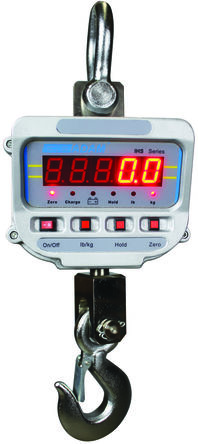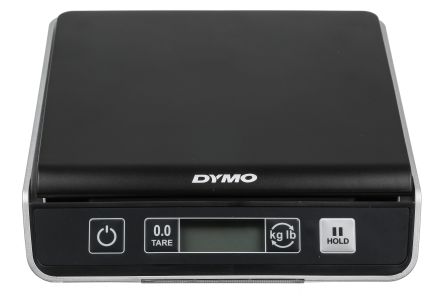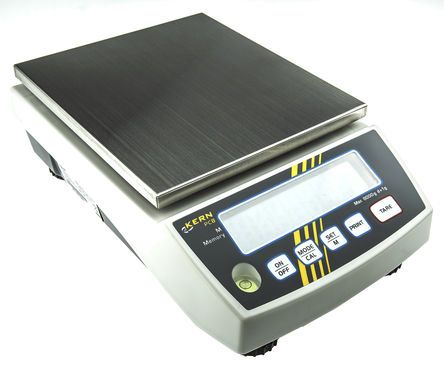|
|
What are weighing scales?
The history of scales dates back to Ancient Egypt, with a simple equal-arm balance on a pivot which compared two masses.Traditionally, a weighing scale was a device that displayed weight by measuring a deflection, such as a spring scale. In modern weighing machines, scales generally use springs or strain gauge load cells.
How do scales work?
Scales calculate how much something weighs by measuring how much force exists between the object being weighed and the Earth.Although weighing scales measure force, they can provide measurements of mass in kilograms, grams, pounds as well as other units of measurement. Modern-day scales are more complicated and have a host of uses. Applications range from laboratory weighing of chemicals to weighing of packages for shipping purposes.
From the small fine-tuned laboratory scales to 10 x 120-foot pit-and-girder machines which weigh train cars and tractor-trailers, scales help make modern life possible.
To get a better understanding of how scales operate, it helps to know about mass and weight.
Difference between mass and weight:
- Mass is a constant unit of the amount of matter an object has and it stays the same no matter where the measurement is taken. The most common units of measurement for mass are the kilogram (kg) and gram (g).
- Weight is the heaviness of an object. It’s dependent on the gravity on the item multiplied by the mass, which is constant. The weight of an object on the top of a mountain will be less than the weight of the same object at the bottom due to gravity variations. A unit of measurement for weight is the newton (n). A newton takes into account the mass of an object and the relative gravity and gives the total force, which is weight.
Difference between scales and balances
Weighing scales are similar to balances, however a balance determines mass by balancing an unknown mass against a known mass.Balances are generally more sophisticated than scales and often used by professionals for advanced scientific weighing in laboratories, universities, medical facilities and research and development related environments. Types of balance include microbalances, analytical balance and precision balances.
It’s commonly accepted that a scale is less sophisticated in precision than a balance, and they’re typically used in food and beverage, health, industrial and commercial industries for weighing ingredients, monitoring personal health and for stocktaking procedures for businesses.
What are industrial weighing scales?
Industrial scales are used for a variety of purposes across many different industries such as agriculture and laboratory.Industrial scales are designed to achieve the highest accuracy possible and for use in environments which are usually harsher than commercial settings.
They provide essential weighing information for fiscal, legislative and operational purposes. Types of industrial weighing scales range from laboratory scales with capacities of less than 1kg up to large platform floor scales and crane scales with capacities of 10 tonnes or more.
What are the different types of industrial weighing scales?
Difference between digital and analogue scales
Scales can be divided into two broad categories – digital and analogue. There isn’t a lot of difference between digital and analogue weighing machines, but analogue machines were widely used before digital ones came into use.Since analogue scales work mechanically the results aren’t the same every time they’re used to weigh a product. That’s why digital scales have completely conquered the world of weighing machines. They offer a better design and more features compared to analogue ones. Both the machines have the same function of measuring weight, but digital weighing machines have an LCD display, memory capacity and accurate weighing capability.
Pros and cons of digital and analogue scales
The advantage of analogue weighing scales over digital ones is they work mechanically and so don’t need a power supply. On the other hand, digital scales need to regularly have the batteries changed.But while not all scales use springs, all of them measure weight using mechanical components. So analogue and digital scales differ in how they display weight – mechanically or electronically.
Electronic weighing scales use an analogue-to-digital converter which translates the continuous readout data from the scale into digital information.
Digital scales generally require less expertise to use than those with mechanical readouts, and are capable of higher precision and faster processing, so provide more accurate readings.
Different types of industrial scales and their uses
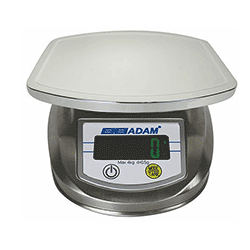 |
Astro Compact ScalesThese scales are designed for use in a variety of food environments – from small café kitchens and mid-sized catering companies to large restaurant chains and internationally known fast-food franchises. The stainless steel is ideal for kitchen settings and allows efficient cleaning. |
 |
Bench ScalesBench scales are robust and often portable scales. They’re typically used for weighing smaller items and are designed to be used on a worktop or bench. They can be used in an extensive range of applications and for tasks as simple as weighing a small parcel or ingredients. |
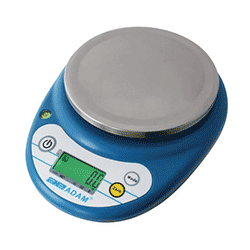 |
Compact Balance ScalesCompact balance scales are very common, as they tend to be inexpensive and can be used almost everywhere for a variety of purposes. They’re lightweight and easy to transport, and can usually be powered by batteries for added mobility. Compact scales can be used in almost every industry and are useful when travelling or moving around, such as carrying to various classrooms or at trade shows. |
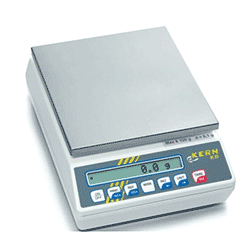 |
Electronic Counting ScalesElectronic piece counters are ideal for anywhere an exact count is required. For instance, manufacturing plants use our counting scales to count the number of screws, bolts, washers and more. |
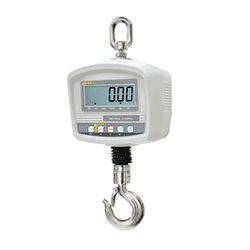 |
Crane ScalesThese scales are often used in the manufacturing and transportation of cargo. Knowing the weight of a load is vital when transporting large amounts by train, plane, or ship because the weight may change the distribution of the freight. If it’s not monitored properly, this could endanger the crew and the rest of the cargo being transported. |
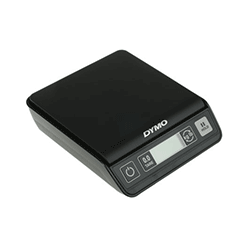 |
Electronic Weighing ScalesElectronic weighing scales offer an LCD display and are used in a wide variety of industries and businesses for weighing and segregating materials accurately. |
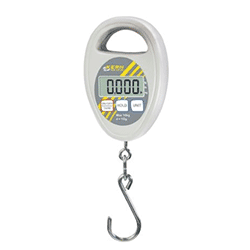 |
Hanging ScalesThese are heavy duty industrial scales commonly used either by hand or suspended from a fixed position. Types of hanging scale include scales that offer large weighing capacities up to 10 tonnes for weighing cargo and shipping containers, and mechanical handheld scales that are typically lower in capacity for weighing small objects such as tote bags and feed sacks. |
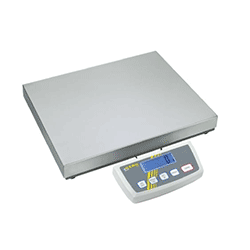 |
Platform ScalesPlatform scales are usually made of stainless steel for easy cleaning. They tend to be very sturdy with a high capacity, and components like cables are covered for extra sturdiness. They're used in manufacturing and business settings to weigh bulky items or count a very high amount of smaller pieces. Some vets and zoos use platform scales to weigh large animals and they’re also used in airports to weigh luggage. |
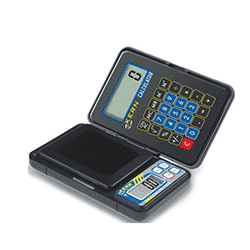 |
Pocket ScalesPocket scales are portable and designed to be small enough to carry in a pocket. Despite their small size, they can accomplish just about anything a regular-sized weighing scale can. These scales are often used by schools, jewellers and in laboratories for measuring small objects. |
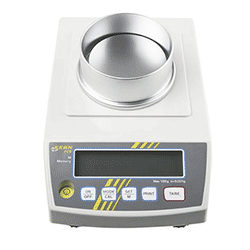 |
Precision Balance ScalesA precision balance or precision scale is used to describe a higher grade of balance or weighing scale with a high precision (up to 0.01g readability). They’re built to last and are ideal for school science experiments, field work and medical research. |
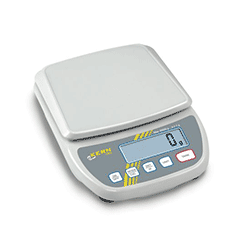 |
Precision Electronic ScalesThese scales are used to describe a digital weighing scale which is precise and accurate in its measurement. They’re suitable for use as high-quality medical scales within laboratory or medical environments because of their precise nature and advanced technology. |
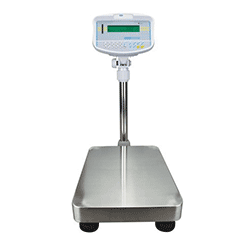 |
Warrior Washdown ScalesWarrior scales meet the demands of cleaning room environments in most industries including food, pharmaceutical, veterinary, industrial and manufacturing tasks. Warrior scales feature durable stainless steel bases and sealed display for operation in wet environments and easy cleaning after weighing. |
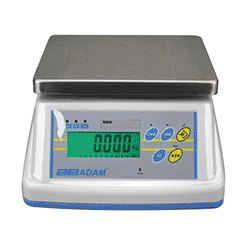 |
Washdown ScalesAll washdown scales can be thoroughly washed, as they incorporate stainless steel parts and watertight seals. Ideal for use in many industries, they’re well-suited for weighing food and beverages, powders, chemicals, pharmaceuticals, or for any application needing a sealed scale for wet or dusty environments. This allows for removal of any lingering particles after weighing, which reduces the risk of cross-contamination, removes dirt build-up and helps eliminate the growth of bacteria, mould or other toxins. |
Key considerations for weighing scales
-
- Accuracy – the scale’s ability to provide a result that is as close as possible to the actual value. The best modern sales have an accuracy of better than one part in 100 million when one-kilogram masses are compared.
- Calibration – the comparison between the output of a scale against a standard value. Usually done with a standard weight and adjusted so the instrument gives a reading in agreement.
- Capacity – the heaviest amount that can be measured on the scale.
- Precision – the amount of agreement between repeated measurements of the same quantity. Which is also known as repeatability. This means a scale can be really precise but not necessarily be accurate.
- Readability – this is the smallest division at which the scale can be read. It can vary from 0.1g to 0.0000001g.
- Tare – the act of removing a known weight of an object, usually the weighing container, to make a scale read at zero. This means the final reading will show just the material’s weight and not incorporate the weight of the container.
How accurate are weighing scales?
Which is more accurate, a digital or analogue scale?
The most accurate type of weighing scale is believed to be digital. The weight and mass of the weighing object is deciphered and indicated in a digital format. With digital scales you can be doubly sure of the quantity. These weighing scales are generally used in industries where precision rules like cosmetics and health.Resolution, precision and accuracy of weighing scales
There are three main qualities which determine whether scales are working properly:-
- Resolution – this is the value which shows how close the scale can read to the object’s actual weight. For instance, a scale could have a resolution of one gram, which means if an object weighs 20g the scale will give a reading up to one gram either way from the object’s true weight.
- Precision – this differs from accuracy because accuracy is needed once, whereas precision is needed all of the time. If the same object is weighed repeatedly and shows as different measurements each time, then the scale has low precision. However, if the same reading shows every time the object is weighed, then the scale has perfect precision.
- Accuracy – however, precision doesn’t necessarily mean accuracy. If the resolution of the scale is low, even with perfect precision, it won’t give the true weight of an object. In order to have high accuracy, the scale must have both high resolution and high precision.
Why scales might not be accurate
Over time, scales can lose accuracy due to wear and tear from regular use and age. Scales must maintain their original balance for accuracy, but because over time they tend to lose this balance they will require recalibration. Electronic scales may suffer electrical malfunction over time which can affect accuracy.Even new scales can become inaccurate in certain conditions, particularly in extreme temperatures. For this reason, the most accurate scales offer high temperature stability.
This is also the case for new scales used in rough conditions which are subject to vibration and jarring. That’s why in outdoor and industrial environments it’s important to clean weighing equipment to ensure maintained accuracy.
There are weight sets available that allow people to calibrate the scale themselves, or the scales can be calibrated by hiring a professional to calibrate them on site. See here for more information about calibration services

